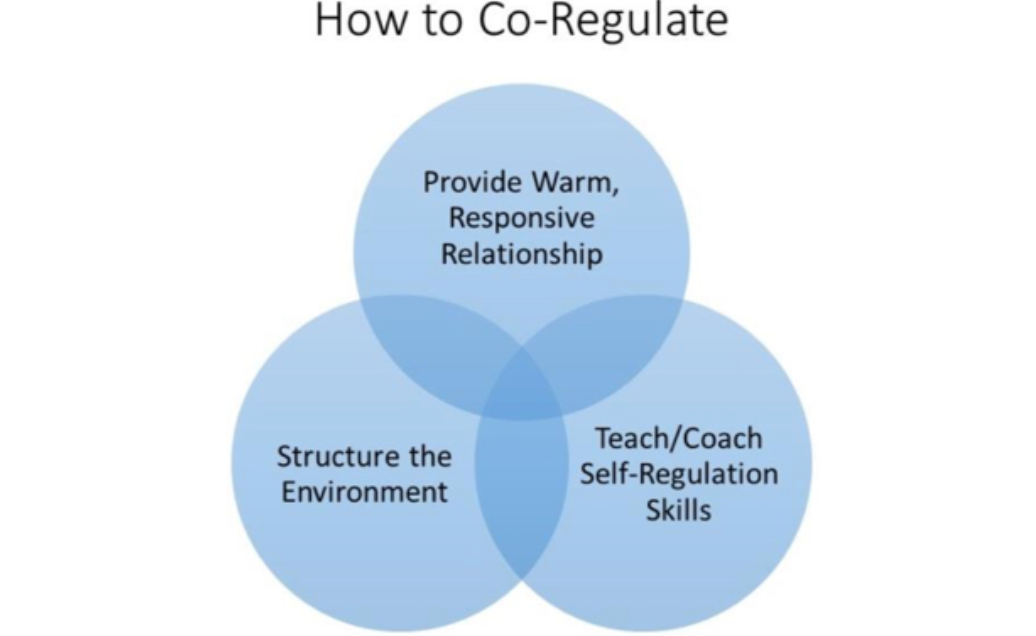Co Regulation Techniques Specific Details
Co-Regulation Techniques: Nurturing Positive Interactions for Child Development
Co-regulation is the interaction which plays a crucial role in early childhood education and development. It focuses on the relationship between a child and their caregiver, where the caregiver provides support and guidance to help the child understand and regulate their emotions, behavior, and social interactions. By nurturing positive co-regulation techniques, we can create an environment that promotes optimal learning and growth in children. In this article, we will explore some co-regulation techniques and their significance in early childhood education.
1. Building Trust and Connection

Building trust and connection between caregivers and children is a critical aspect of co-regulation. When children feel safe and connected to their caregivers, they are more likely to regulate their emotions effectively. Trust and connection can be nurtured through responsive caregiving, actively listening to children, and providing them with a comforting and safe environment.
2. Emotional Regulation Techniques

Emotional regulation is an essential skill for children to develop. It enables them to manage and express their emotions appropriately. Caregivers can teach emotional regulation by helping children identify their feelings, validating their emotions, and providing strategies to cope with intense emotions. Teaching deep breathing exercises, introducing calming activities, and promoting positive self-talk are effective techniques to enhance emotional regulation.
3. Social Interaction and Communication

Social interaction and communication skills are vital for a child's overall development. Caregivers can support children by creating opportunities for socialization, such as playdates, group activities, or joining social clubs. Encouraging active listening, teaching turn-taking, and fostering empathy are essential techniques to promote positive social interactions and effective communication among children.
FAQs
Q: How can co-regulation techniques benefit children with learning disabilities?
A: Co-regulation techniques provide children with learning disabilities a supportive environment where they can regulate their emotions and behavior effectively. By understanding their specific needs, caregivers can tailor co-regulation strategies to help these children overcome challenges and enhance their learning experience.
Q: Can co-regulation techniques be used outside of the classroom?
A: Absolutely! Co-regulation techniques can be applied in various settings, including at home, in social gatherings, or during extracurricular activities. Consistency and positive reinforcement of co-regulation techniques across different environments can significantly contribute to a child's overall emotional well-being and development.
Q: How can caregivers learn more about effective co-regulation techniques?
A: Caregivers seeking to learn more about effective co-regulation techniques can consult with early childhood education professionals, attend parenting workshops, or join support groups. Engaging in these resources can provide valuable insights and practical strategies to foster positive co-regulation in the relationship between caregivers and children.
Conclusion
Co-regulation techniques play a vital role in creating a nurturing environment for children to thrive. By building trust and connection, teaching emotional regulation, and promoting positive social interactions and communication, caregivers can help children develop the necessary skills to regulate their emotions and behavior effectively. Remember, co-regulation goes beyond the classroom and can be applied in various settings, contributing to a child's holistic growth and development.
Disclaimer: The information in this article is based on general knowledge and should not substitute professional advice. Please consult with certified experts for personalized guidance and strategies related to co-regulation techniques.
Pin By Bethany Hogan On Early Childhood Education | Early Childhood
 Image Source : www.pinterest.ca
Image Source : www.pinterest.ca Co-Regulation: The Key To Building Sustainable Trauma-Informed School
 Image Source : medium.com
Image Source : medium.com regulation opre trauma informed communities acf hhs
10 Strategies For Co-Regulation With Your Kids
 Image Source : www.my.thrive-life.ca
Image Source : www.my.thrive-life.ca messy
Pin On Child Development
 Image Source : www.pinterest.ph
Image Source : www.pinterest.ph Co-Regulation Techniques Are Simple Ways To Calm The Nervous System
 Image Source : flipboard.com
Image Source : flipboard.com What Is Self Regulation - Hannah Edmunds
 Image Source : pipihannahedmunds.blogspot.com
Image Source : pipihannahedmunds.blogspot.com Thespeechpractice On Instagram: “Co-regulation Is The Interaction Which
 Image Source : www.pinterest.com
Image Source : www.pinterest.com regulation regulating
Techniques For Co-Regulation
 Image Source : www.jennynurick.com
Image Source : www.jennynurick.com regulation psychotherapy healing
Pin on child development. Thespeechpractice on instagram: “co-regulation is the interaction which. Regulation psychotherapy healing. Regulation regulating. What is self regulation